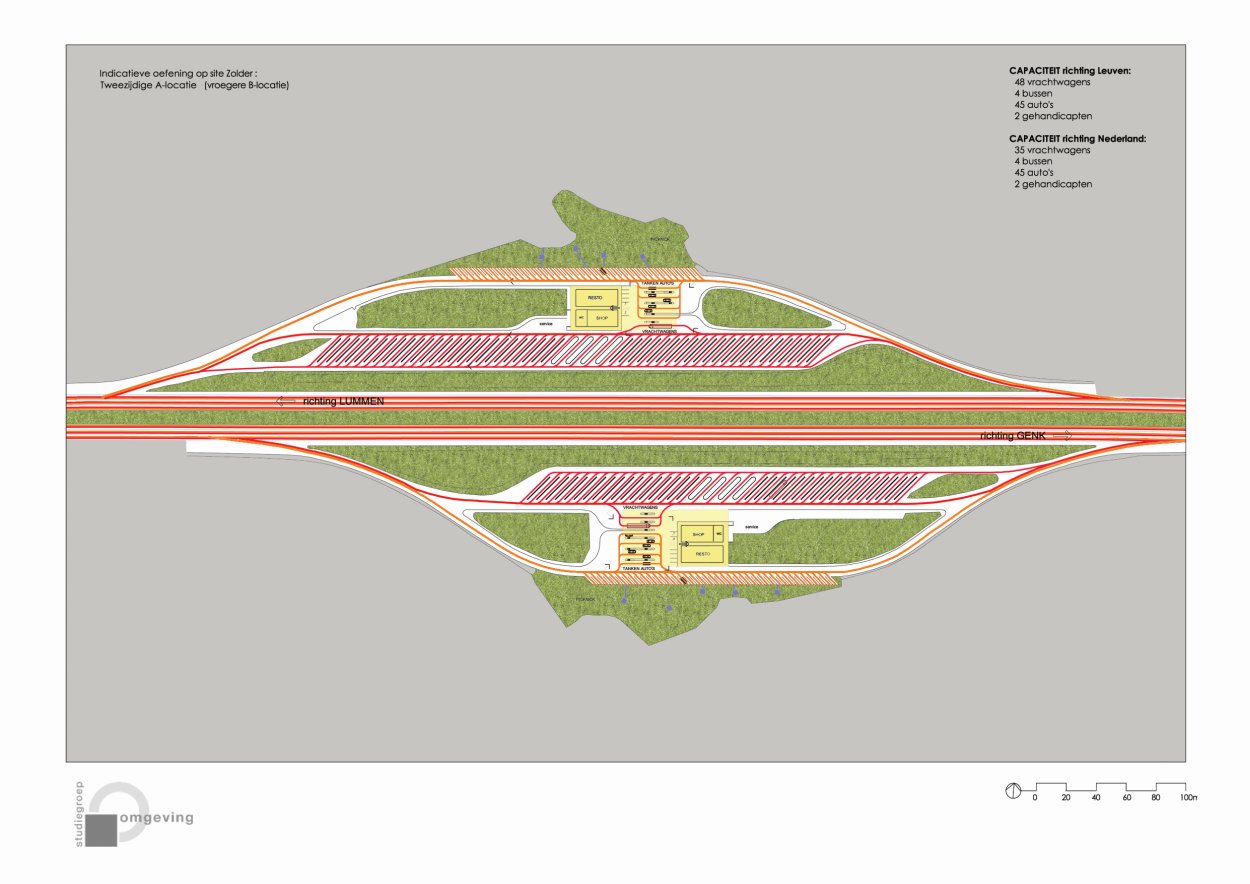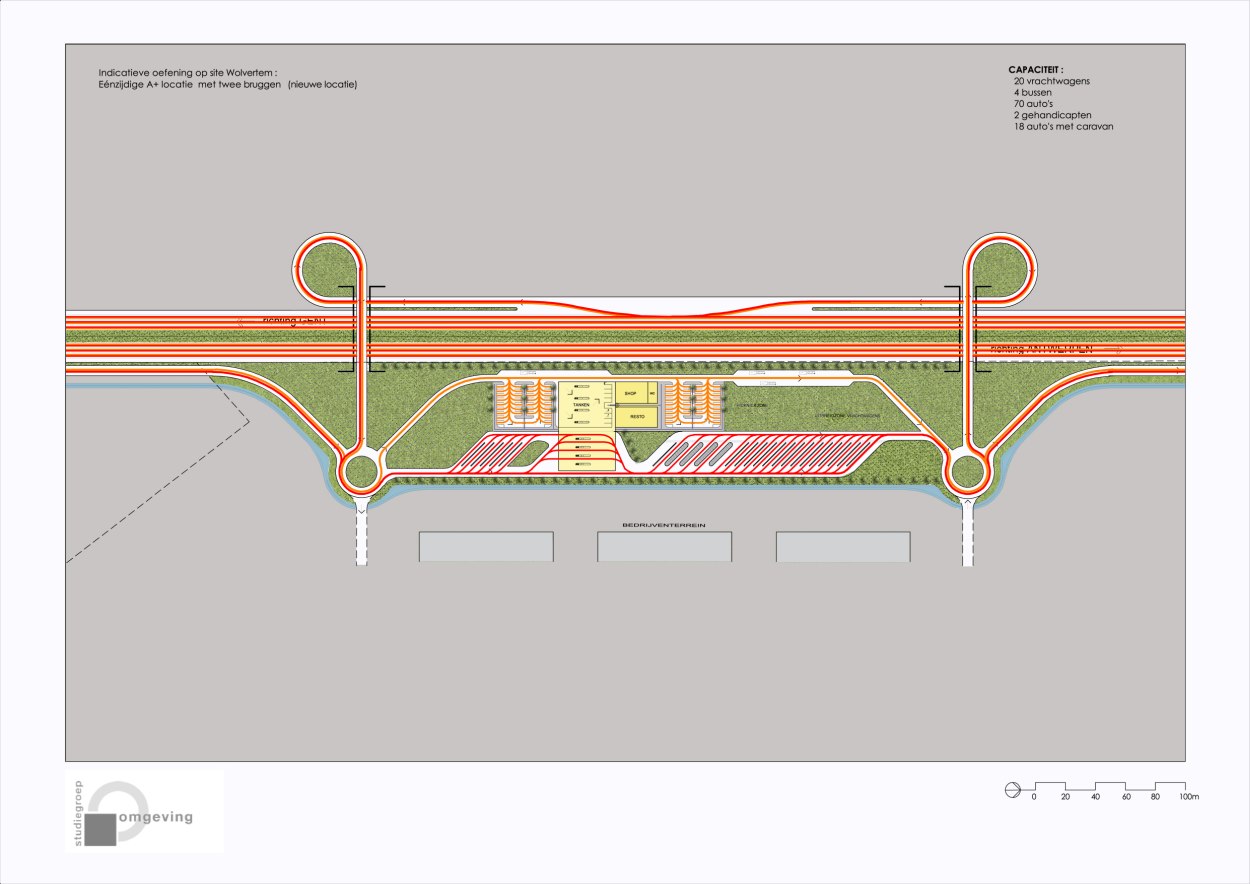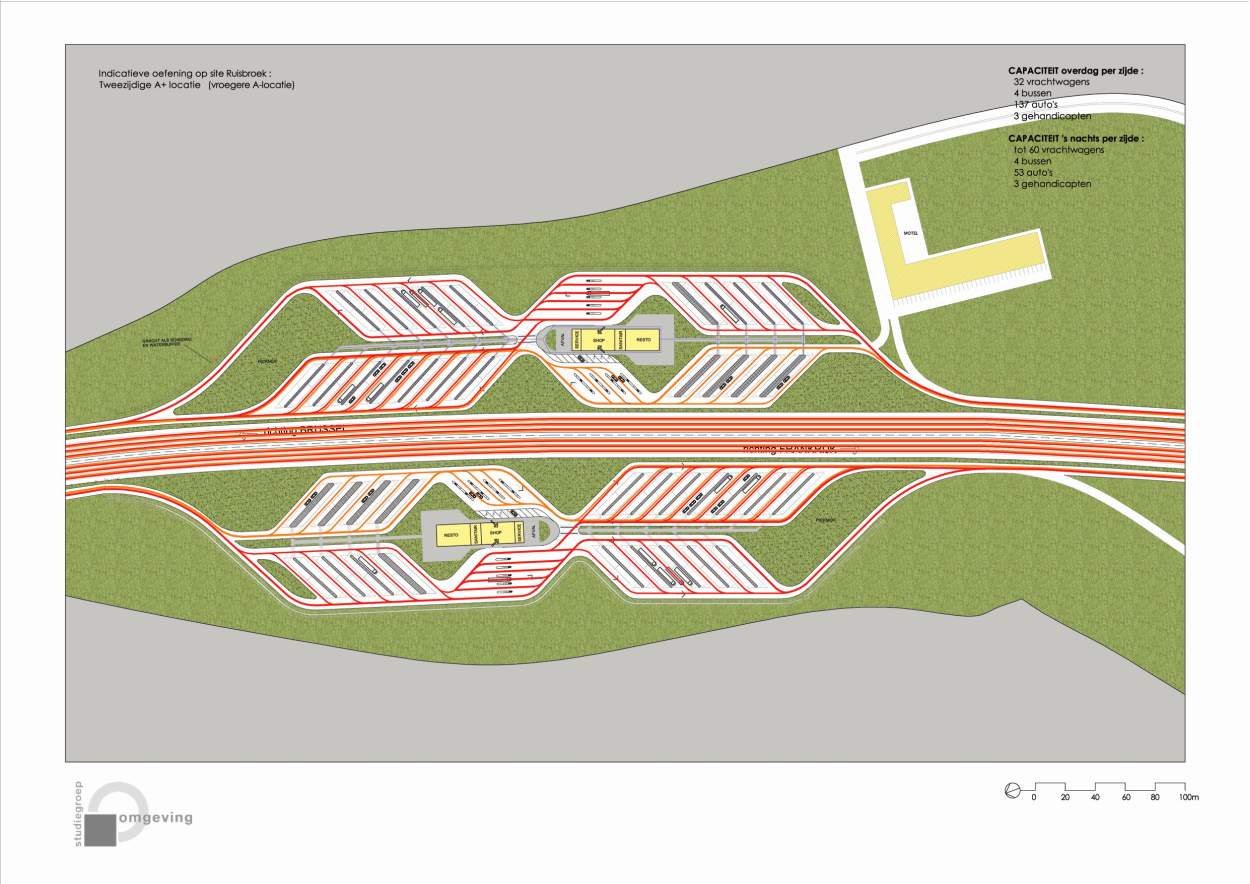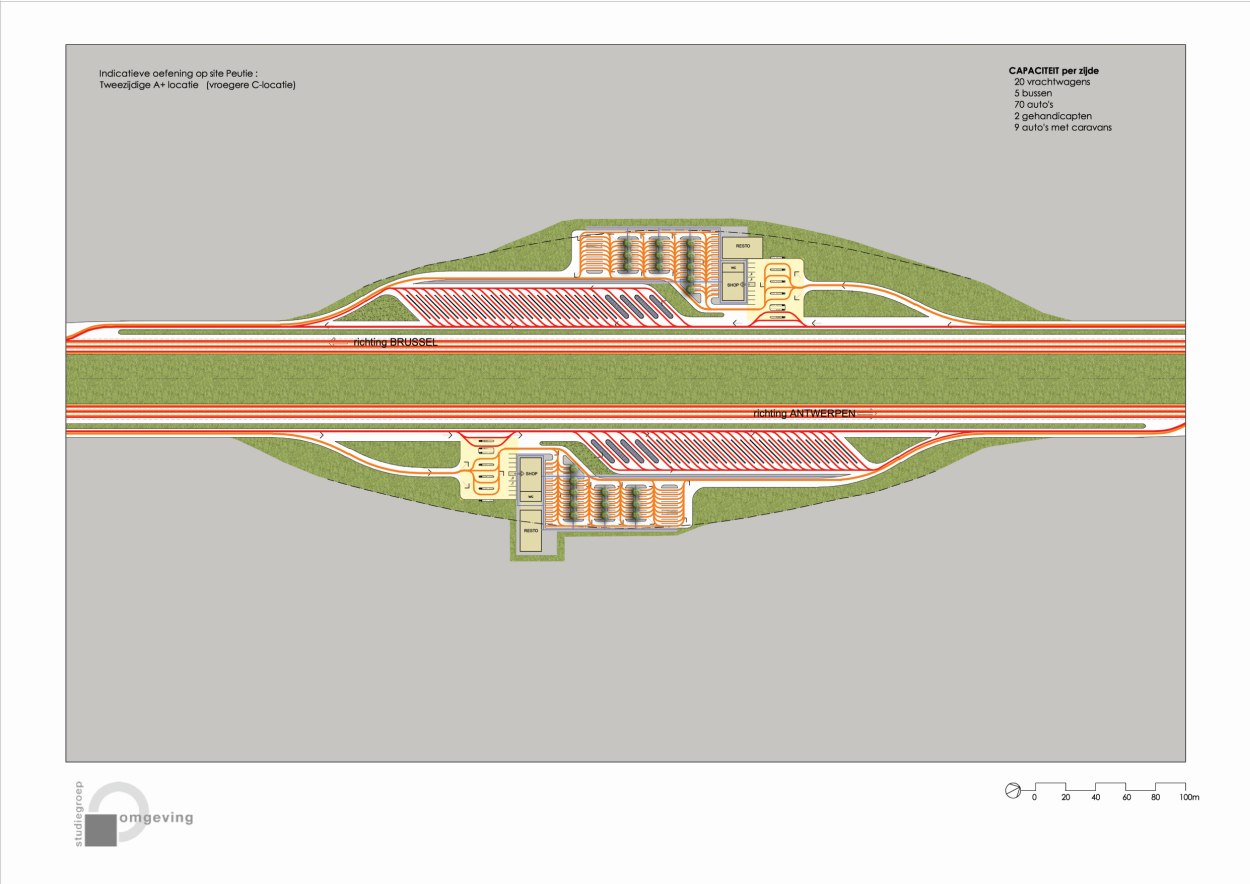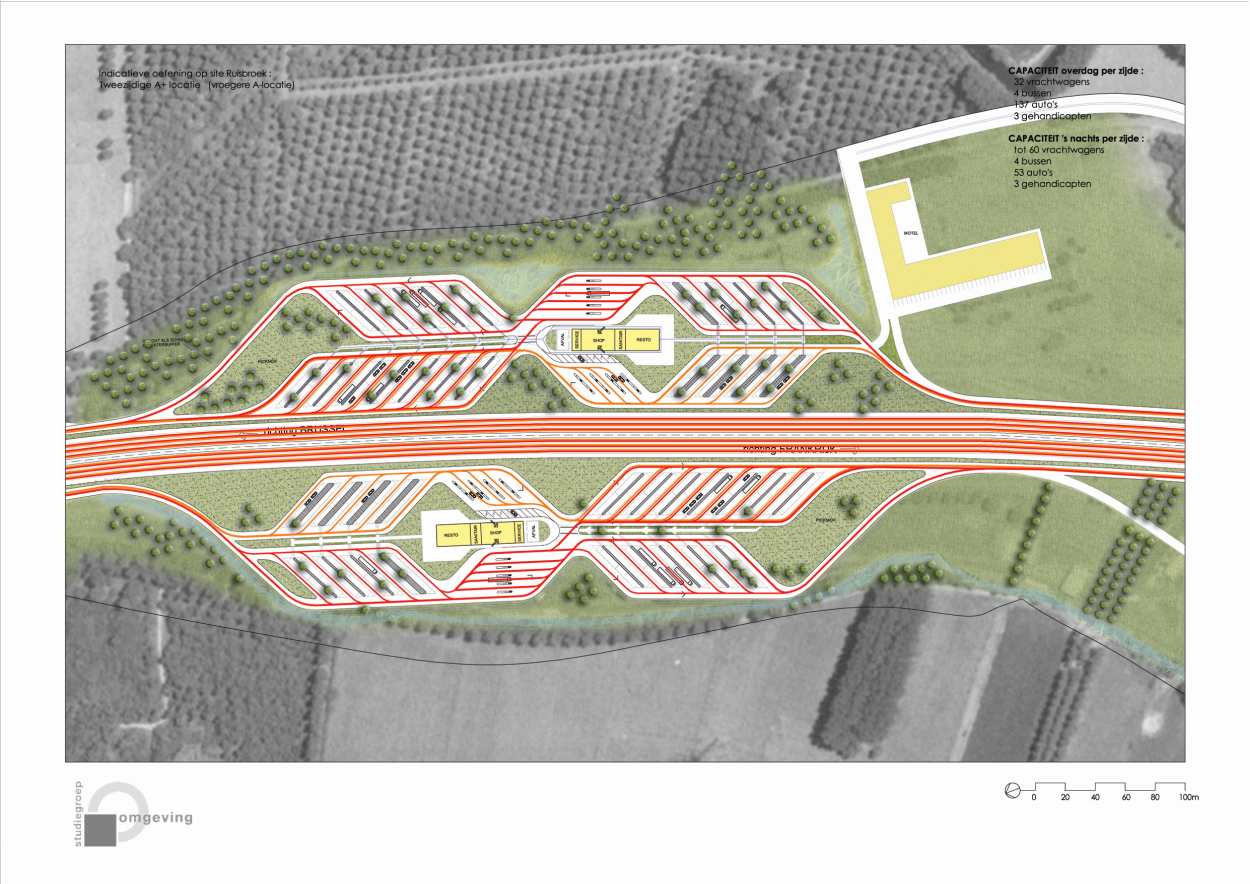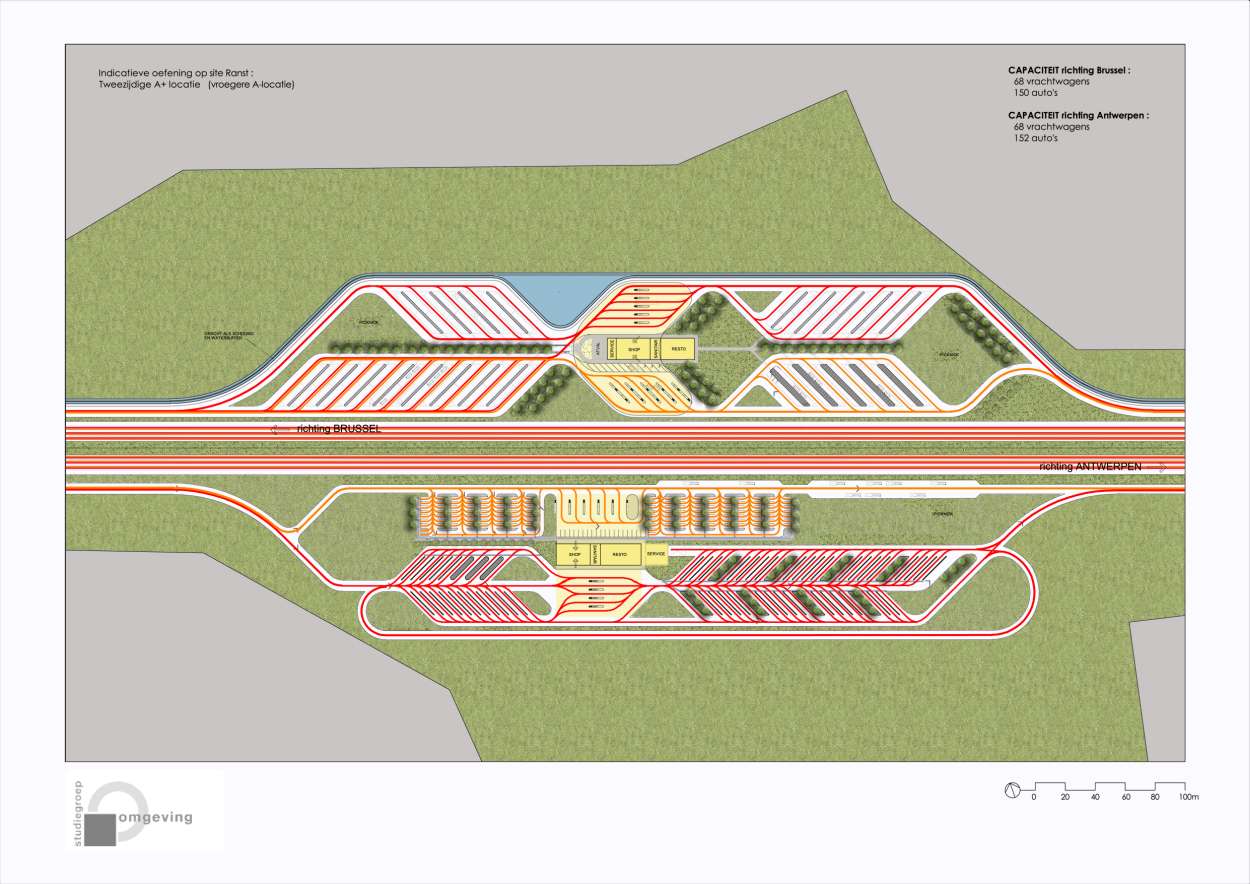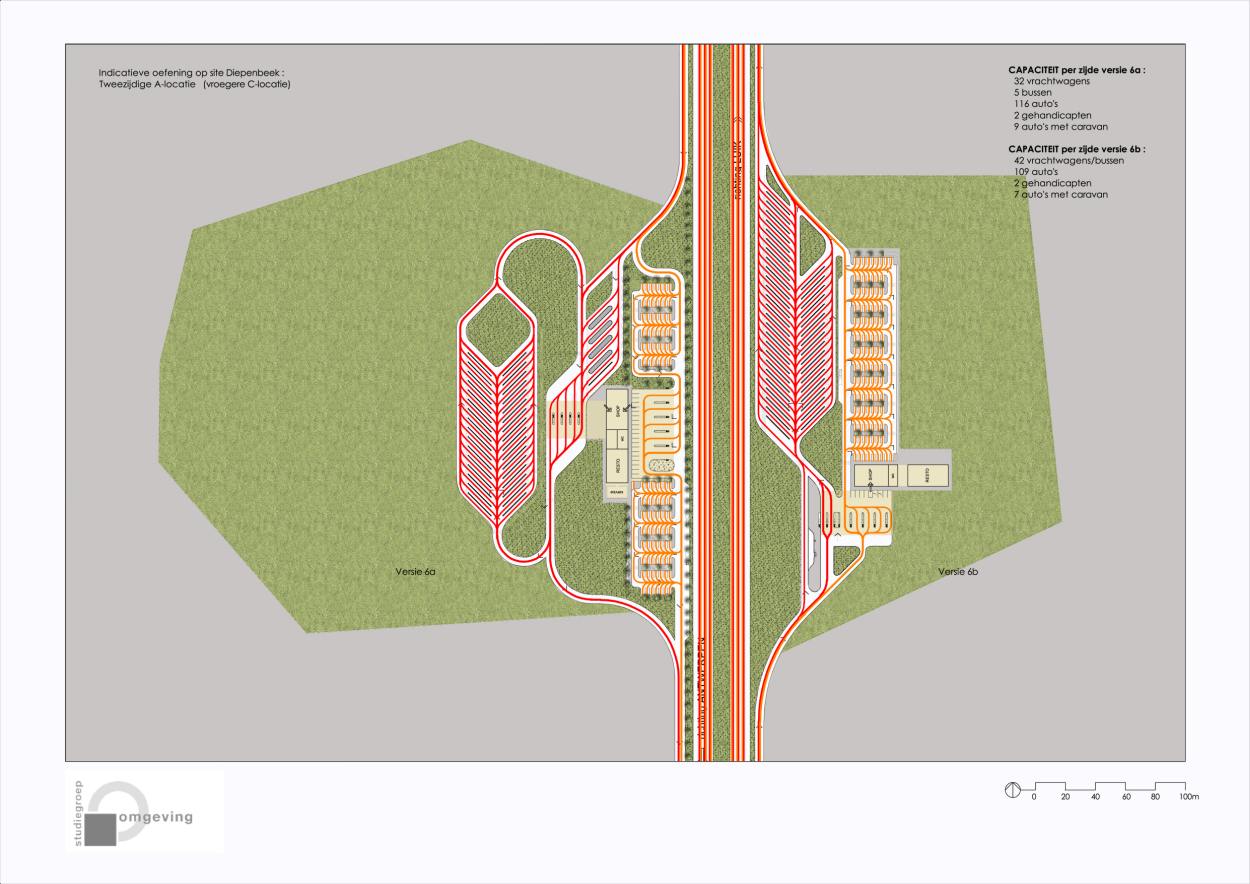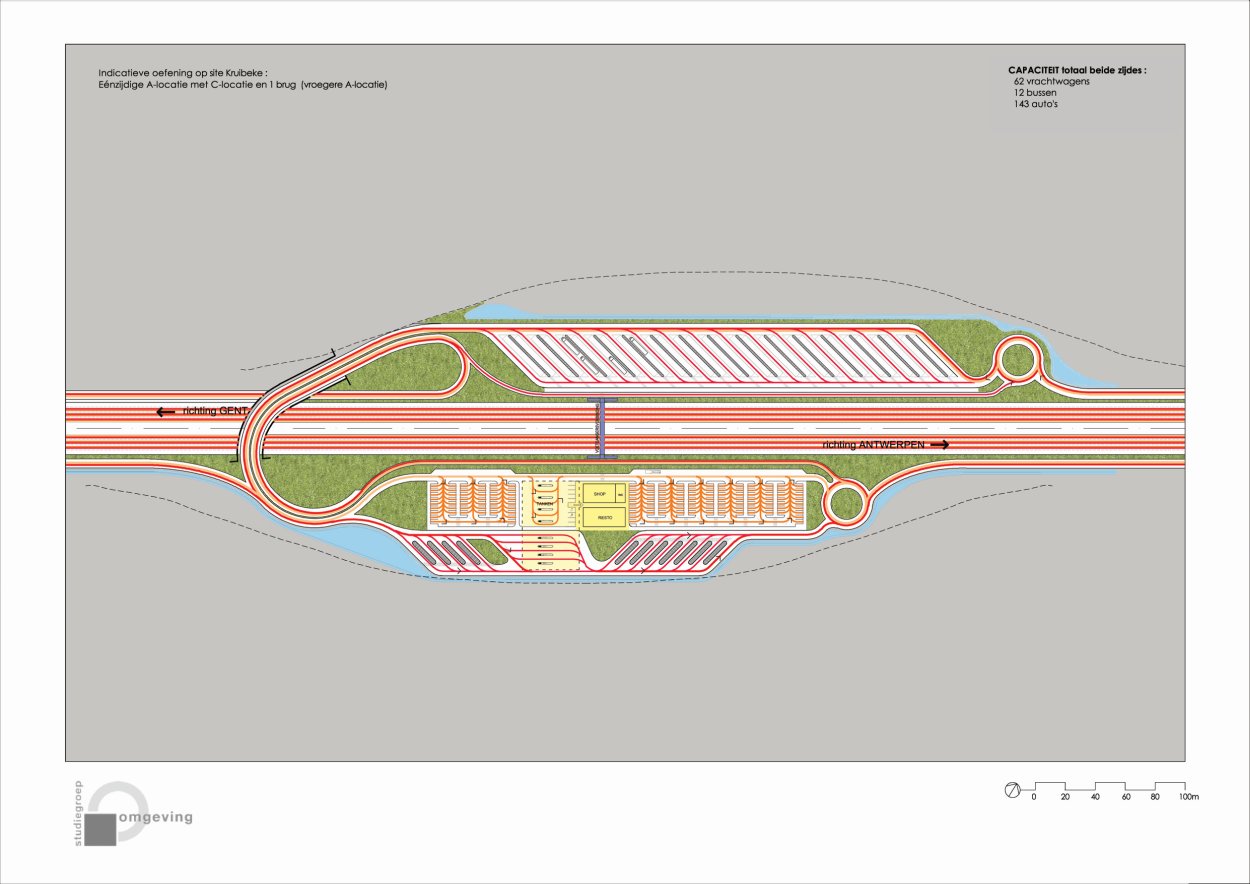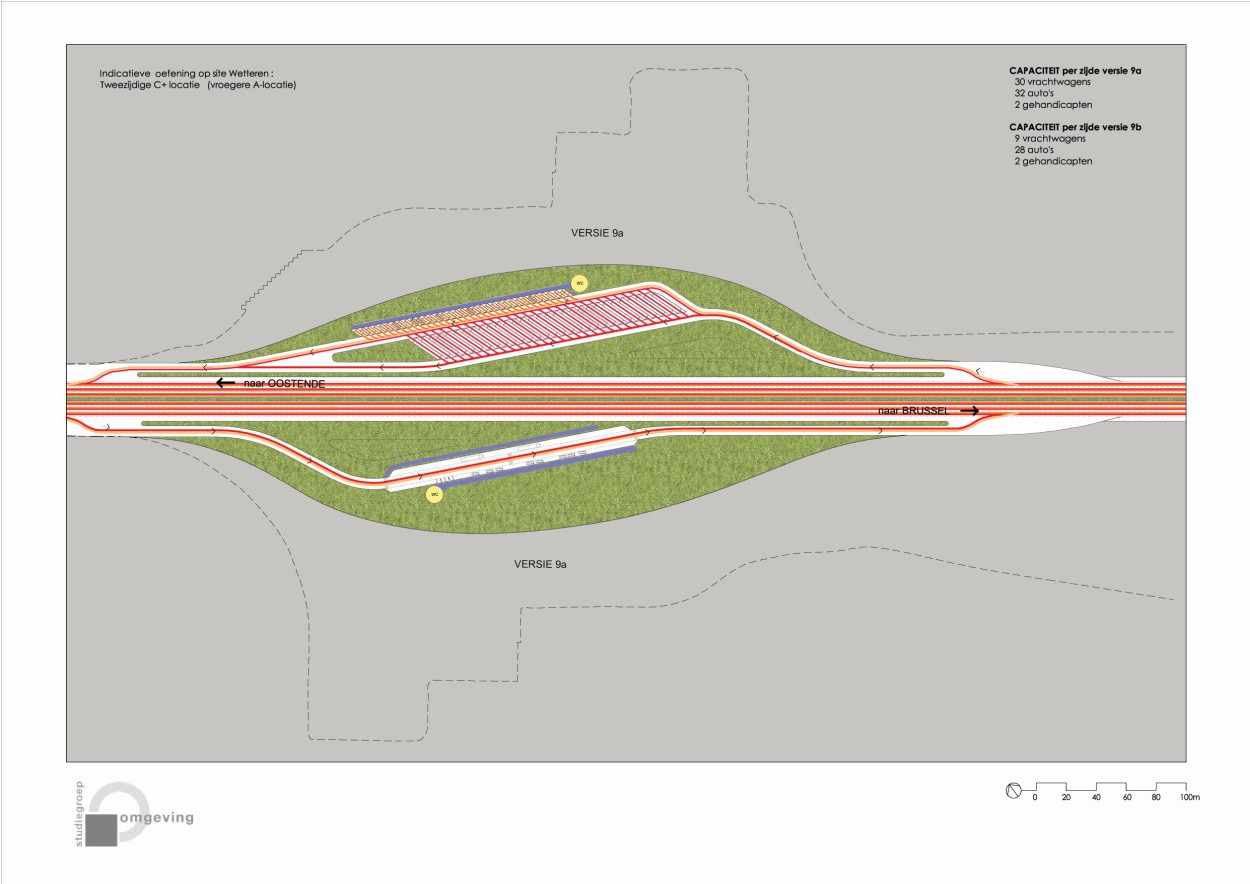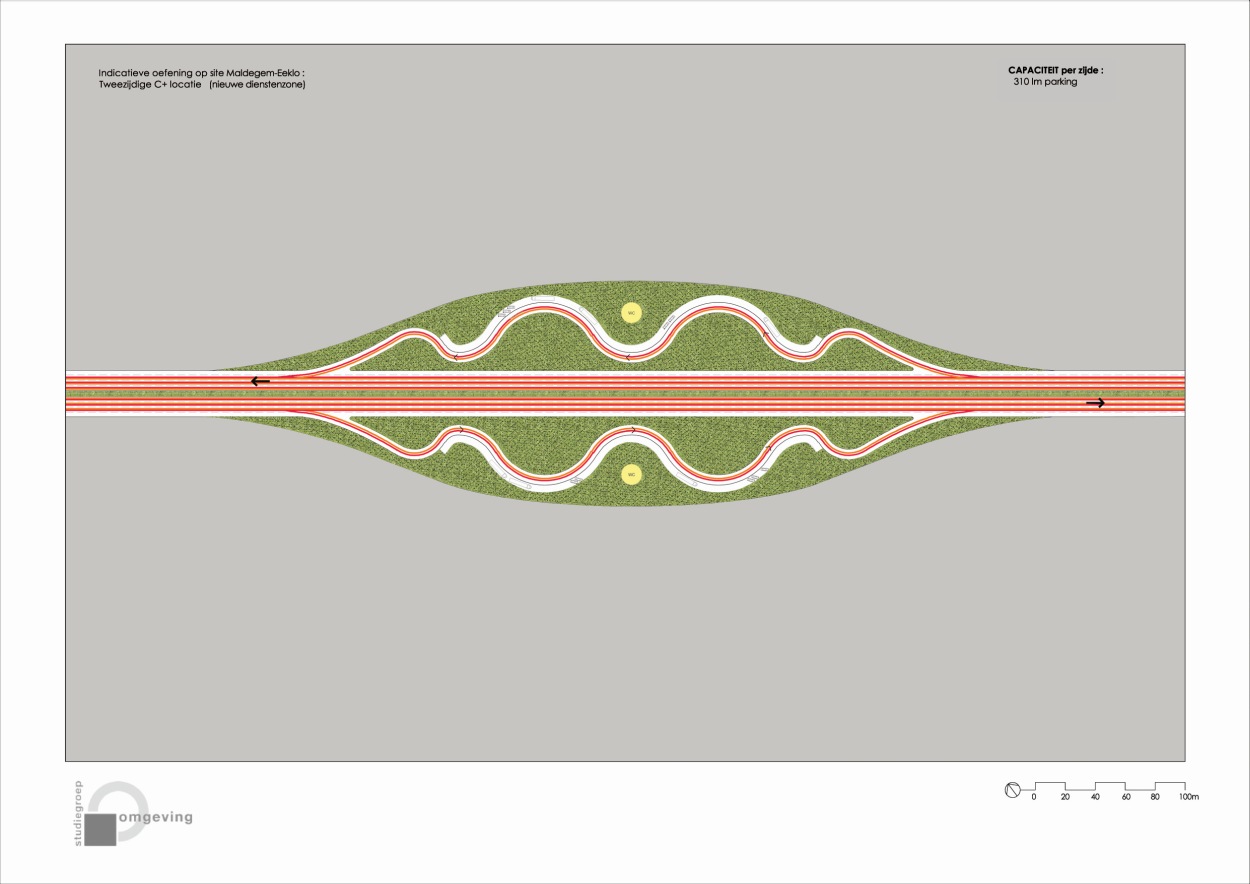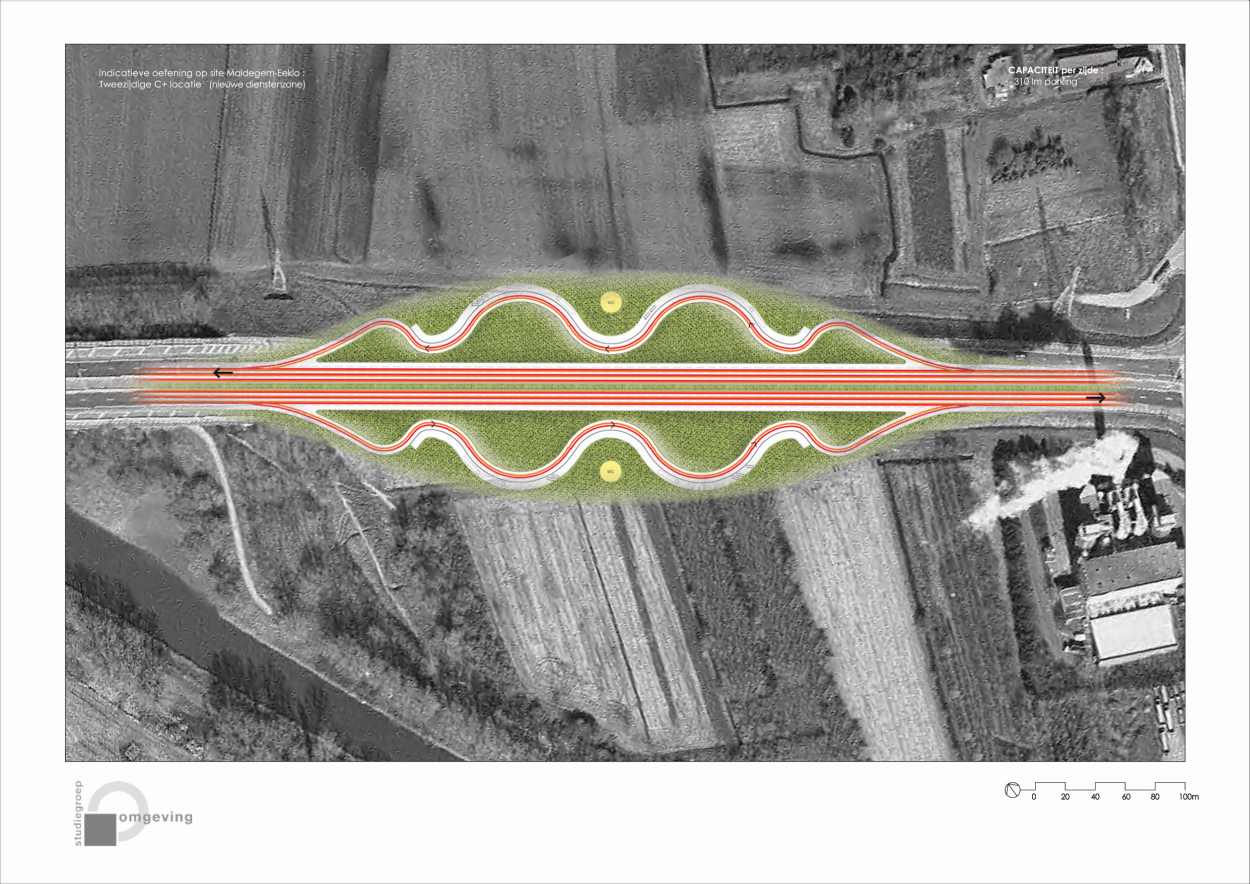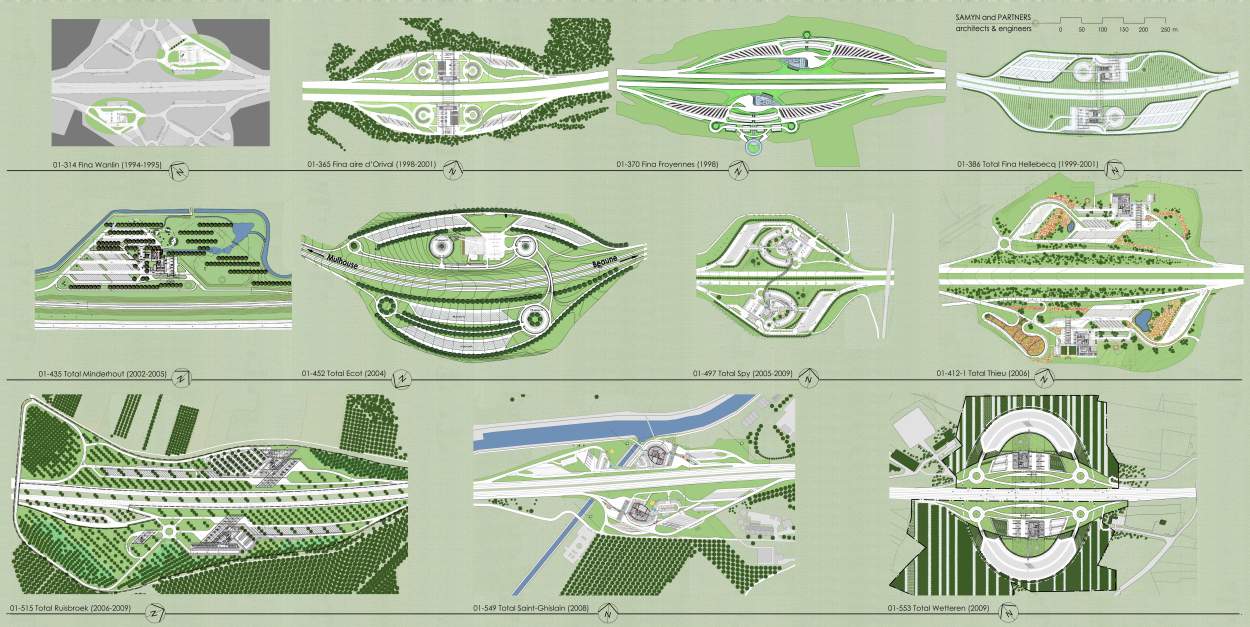
476-Structural schematics for highway service areas
BELGIUM
(2004-2005); (01-476).
These studies of structural schematics for highway service areas is situated within the wider framework of the strategic equipment plans for highways in Flanders made by the STUDIEGROEP OMGEVING.
They are meant to serve as a guide and contain recommendations for future concessionaries during the planning phase of their projects.
The first objective is to define new topologies as durable as possible and adaptable to foreseeable or unforeseeable developments, concerning the equipping of these zones.
The concept is articulated around:
I. A robust relationship with the environment, from visual aspects to integration with the existing constructed environment and sourced by architectural reflection as to the natural landscape and socio-cultural characteristics of the site.
II. The variability of potential service offerings (fuel, parking area coupled with the public transportation network or bicycle rental, rest, food, lodging, shops, meeting areas or even professional facilities.)
III. Efficiency
1. The optimisation of the use, 24/24, of the parking surfaces, which could imply that in certain instances there will be a service area on only one side of the highway used by traffic in one direction in the morning, and used by returning traffic in the evening and connected by a footbridge. It could equally imply parking areas for passenger cars organised to welcome truck parking at night (a growing traffic).
2. The extreme economy of the surface with a search for the greatest possible compactness by a judicious organisation of the traffic flow and parking areas.
3. The concentration of construction at one point, as much for functionality and economy as well as a High Environnemental Quality approach.
IV. Security
1. Road security, on arrival to and departure from the rest area, is favourised by deceleration on arrival and acceleration on departure.
2. The separation of traffic flow for passenger vehicles and trucks.
3. A roadside architecture whose readability reduces the need for signage to a strict minimum.
4. Speed limitation induced by the architecture of the roads themselves; this also discourages queue-hopping.
5. Well-lit and protected pedestrian paths.
6. Integrity of users through natural social control, the landscaping, the transparency and visual surveillance by the users as well as the personnel working at the service zone, and finally lighting at night with good colour rendering and minimum light pollution for the surrounding environment.
V. Comfort
1. Management of noise protection on the site, for example through using the calmer zones for truck parking with the understanding that their refrigeration units will also be rendered more silent in the future, and by organising the flow of the noisiest traffic towards the highway.
2. Climatic protection (rain, wind, solar) of the pedestrian zones that could be extended to the footpaths.
3. Management of olfactory and dust pollution (due to traffic as well as waste materials) by determining the minimum percentage of green zones and the number of high-trunk trees per surface unit according the specific project.
4. Management of microclimates, particularly air currents.
5. A precise definition of the minimum equipment of each service zone, their interaction and location, as well as the performance levels to be reached. This is particularly important for rest zones, play areas, picnic areas and toilet facilities.
VI. Architectural expression
Contrary to traditional urban situations where the formal guidelines are constraining, every architectural form is authorised on condition that specifications relevant to environmental performance are strictly respected (BREAM, LEED, HQE, Duurzaambouwen, etc.).
The architectural form could even become extravagant for those sites that offer a very wide diversity of services.
However, a discrete approach in harmony with the environment is favoured for those service zones that only offer parking and toilet facilities. These are not included in the concessionary zones.
The Master plans of eleven service stations designed by Samyn and Partners for TOTAL between 1994 and 2009 illustrate the Theoretical study.
Document E41_01/476 -En Issue of 2009-08-27
Philippe SAMYN and PARTNERS All projects are designed by Philippe Samyn who also supervises every drawing
Philippe SAMYN and PARTNERS with SETESCO (sister company 1986-2006) or INGENIEURSBUREAU MEIJER (sister company since 2007 – 2015) if not mentioned
Philippe SAMYN and PARTNERS with FTI (sister company since 1989) if not mentioned
| 01-476 | Typological study for the Highway service Stations in Flanders. |
| Client: | Studiegroep omgeving for FLANDERS MINISTRY OF PUBLIC WORKS. |
| Architecture: | Partner in charge : J. Ceyssens. Associates : S. Pieters. |
For plans sections and elevations, please refer to the archives section of the site available from the “references” menu.

